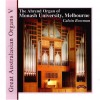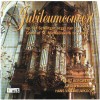Composers
Johann Peter Kellner (variants: Keller, Kelner) (28 September 1705 – 19 April 1772) was a German organist and composer. He was the father of Johann Christoph Kellner.
He was born in Gräfenroda, Thuringia, and was intended by his parents to follow his father into a career as a lamp-black merchant. He was devoted to music from childhood, and first learnt singing from the cantor Johann Peter Nagel and keyboard from Johann Heinrich Nagel, the son of the former. He studied for a year from 1720 with organist Johann Schmidt in Zella, followed by a year with organist Hieronymus Florentius Quehl (or Kehl) in Suhl, during which he also studied composition. He knew Johann Sebastian Bach, though it is not known whether he was taught by him, and also knew George Frideric Handel. In 1722, he returned to tutor at Gräfenroda for three years. He was appointed cantor of Frankenhain in October 1725, returning to Gräfenroda in December 1727 as assistant cantor. He became cantor after Nagel's death in 1732, and remained in the post for the rest of his life; his pupils included Johann Philipp Kirnberger, Johannes Ringk, and J.E. Rembt. Kellner was admired as an organist, and performed for the Dukes of Coburg and Weimar and the Prince of Sondershausen.
He played an important role in the dissemination of music by Johann Sebastian Bach, through the many manuscript copies made by him and his circle, particularly of keyboard and organ works. These are the earliest or only source of many works, and provide information on their chronology, compositional history, and authenticity. There is evidence that he transcribed Bach's trio sonata BWV 1027/BWV 1039 for organ (it was originally for viola da gamba and harpsichord or two flutes and continuo), though only the first movement survives in his hand; movement four (BWV 1027a) survives in a copy made by his student Johann Nicolaus Mempel and movement two in another hand.
Refine by search
view allBiography
Johann Peter Kellner (variants: Keller, Kelner) (28 September 1705 – 19 April 1772) was a German organist and composer. He was the father of Johann Christoph Kellner.
He was born in Gräfenroda, Thuringia, and was intended by his parents to follow his father into a career as a lamp-black merchant. He was devoted to music from childhood, and first learnt singing from the cantor Johann Peter Nagel and keyboard from Johann Heinrich Nagel, the son of the former. He studied for a year from 1720 with organist Johann Schmidt in Zella, followed by a year with organist Hieronymus Florentius Quehl (or Kehl) in Suhl, during which he also studied composition. He knew Johann Sebastian Bach, though it is not known whether he was taught by him, and also knew George Frideric Handel. In 1722, he returned to tutor at Gräfenroda for three years. He was appointed cantor of Frankenhain in October 1725, returning to Gräfenroda in December 1727 as assistant cantor. He became cantor after Nagel's death in 1732, and remained in the post for the rest of his life; his pupils included Johann Philipp Kirnberger, Johannes Ringk, and J.E. Rembt. Kellner was admired as an organist, and performed for the Dukes of Coburg and Weimar and the Prince of Sondershausen.
He played an important role in the dissemination of music by Johann Sebastian Bach, through the many manuscript copies made by him and his circle, particularly of keyboard and organ works. These are the earliest or only source of many works, and provide information on their chronology, compositional history, and authenticity. There is evidence that he transcribed Bach's trio sonata BWV 1027/BWV 1039 for organ (it was originally for viola da gamba and harpsichord or two flutes and continuo), though only the first movement survives in his hand; movement four (BWV 1027a) survives in a copy made by his student Johann Nicolaus Mempel and movement two in another hand.




![Het Historische Orgel in Nederland [CD 13 of 20]](http://static.classicalm.com/repository/collection-cover/small/1005-img1343482337542284.jpg)
